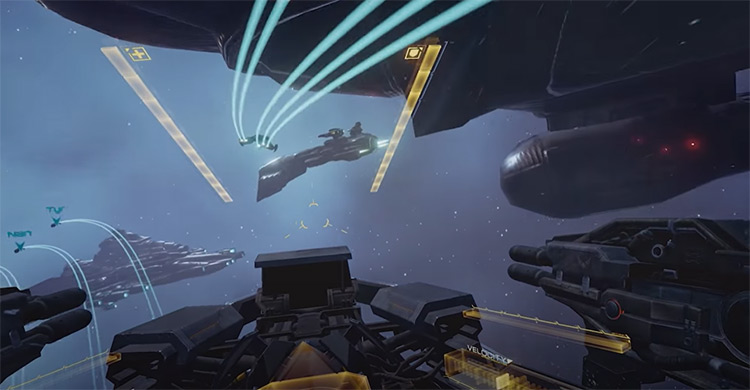
- Project eve platforms how to#
- Project eve platforms code#
- Project eve platforms Pc#
- Project eve platforms series#
In this example, creating Chinese UI using the FT800 bitmap and custom font feature is demonstrated.Ī lift simulation drawn using bitmaps for fonts, arrow and audio in sync This application demonstrates interactive Absolute and Relative dials using points, track and button commands on an FT800 platform. In this application, the commands screensaver and sketch are also utilised with synchronised audio. This application demonstrates a Smart Refrigerator application using inbuilt fonts, stencil operation and the scissor command implemented on the FT800 platform. Touch functionality is also used to navigate menu screens. In this example, multiple bitmaps are used to create animated images. This application demonstrates an interactive Restaurant Demo using menu, track and rotation functions based on the FT800 platform with bitmap cells used for the graphic icons. This application is a custom version of a Slot Machine game and it demonstrates the usage of built-in FT800 widgets and primitives, manipulating bitmaps and playing audio. The demonstration shows how a dynamic logo could be created for a company product. In this example, bitmaps are manipulated to be resized, and animated to move around the display. In this example, Sketch, Slider & Buttons functions are used to demonstrate interactive sketch. In this example, Sketch, Bitmap rotation & Buttons functions are used to demonstrate an interactive signature. In this example, Strips, Points & Blend functions are used to demonstrate drawing stencils.

In this example, Points, Track & Stencil functions are used to demonstrate an interactive rotary dial. In this example, bargraph & Audio functions are used to demonstrate Audio playback. In this example, Rectangles, Buttons, Slider & synthesized sound are used to demonstrate an interactive piano. Points & Bitmaps are used to demonstrate interactive random metaballs. In this example, JPEG decode, Rectangle & POints are used to demonstrate creating interactive menus. Keys & Button functions are used to demonstrate an interactive keyboard. In this example, Blend function, Bitmap flip and JPEG decode functions are used to demonstrate interactive JPEG decode. In this example, String, Gradient slider app functions are used to demonstrate an interactive gradient.Įxample 6 - FT_App_ImageViewer(+EVE2) *** In this example, Lines & custom font functions are used to create an interactive gauge application. In this example, Lines, Points, Jpeg decode & RTC control functions are used to create an interactive clock application. In this example, Clocks, Track and RTC control functions are used to create an interactive clock application.Īccess a video demonstrating this application here
Project eve platforms code#

Project eve platforms Pc#
With this cable the designer can interface between a PC and the development module to experiment, develop, and validate his project. The Sample App code is commented for usage with an Arduino platform and FTDI's MPSSE bridge cable from USB to SPI. The Sample Application (Sample App) is a superset of design examples, demonstrations, and usages of the EVE command set (pseudo language) developed to assist in designers' learning curve as well as providing a starting point for projects.

Project eve platforms series#
Projects with (+EVE2) next to the name will also support FT81x series devices via FTDI’s MPSSE USB to SPI bridge or the FT90x series of microcontrollers.ĪN_391 EVE Platform Guide explains which platforms and EVE chipsets are supported by the examples below. More details on migrating designs from FT80x to FT81x chipset may be found in AN_390 FT80x Migration Guide. To accommodate the extra memory and commands the memory map between EVE2 and EVE is slightly different resulting in slightly different application code.
Project eve platforms how to#
This page provides examples on how to create static and animated displays, control touch features of the TFT panel and playback audio.ĮVE2 extends the functionality of the first generation devices (FT80x) with features such as increased pixel count (800 x 600), additional on-chip object memory (G_RAM now 1MByte) and new commands and registers such as CMD_SETROTATE. EVE is FTDI's series of Human Machine Interface (HMI) controller ICs.


 0 kommentar(er)
0 kommentar(er)
